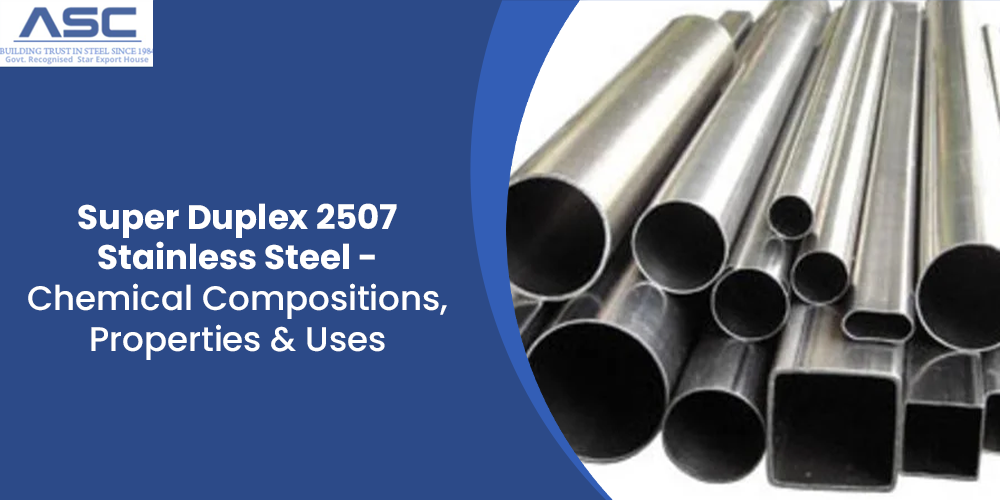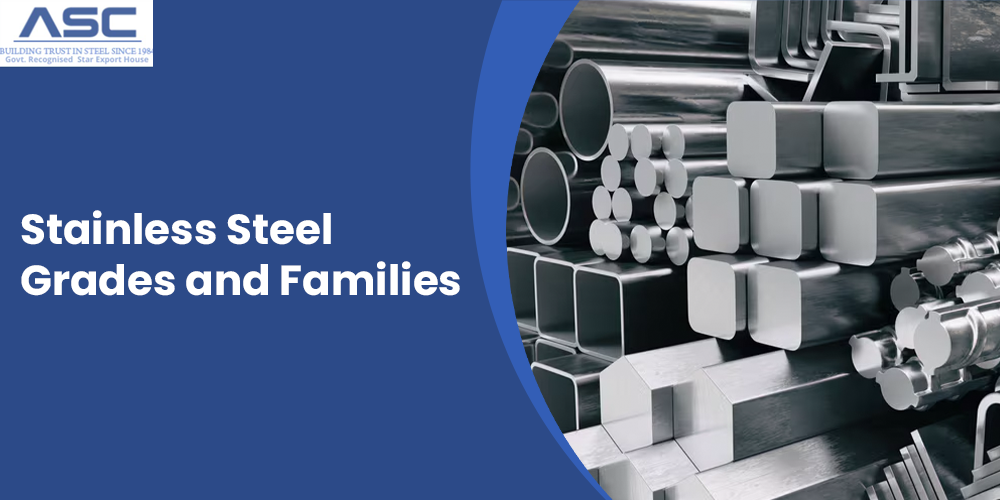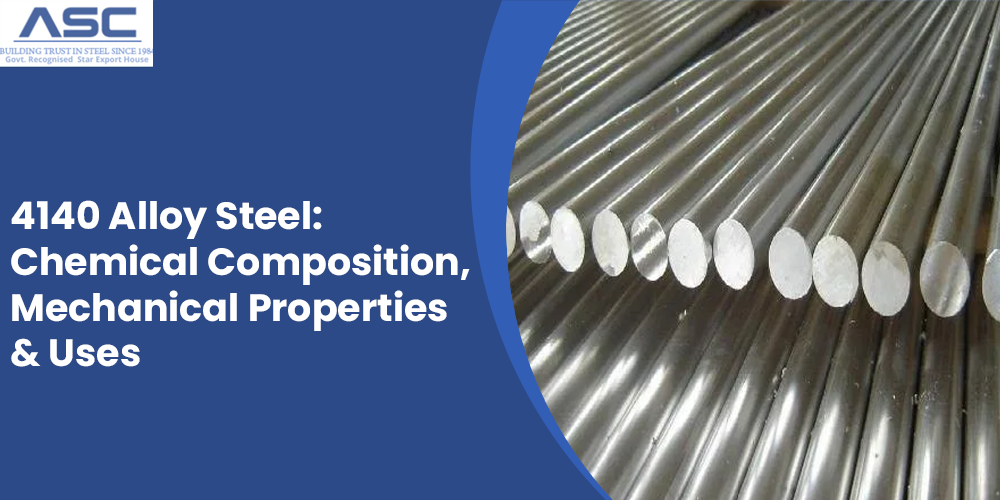All About Monel® Alloys: Definition, History, and Applications
by AMC
Posted on July 15, 2024 at 12:40 PM

Monel® is an alloy of nickel and copper, first developed for commercial use in 1905. It is well-regarded for its excellent resistance to corrosion and high temperatures, making it especially useful in marine and chemical processing industries.
Monel Alloys: Grades and Properties
Monel® alloys come in several grades, with the most commonly used being:
- Monel 400: Known for its strong resistance to corrosion, Monel 400 is often used in marine and chemical environments. It can only be work-hardened, which can limit its machinability.
- Monel R-405: This alloy shares similar properties with Monel 400 but has a higher sulfur content, which improves its machinability.
- Monel K-500: This grade includes aluminum and titanium, which enhance its mechanical strength. Monel K-500 can be both work-hardened and precipitation-hardened, offering greater versatility.
Monel History and Development
Monel® was created to meet the need for a durable material that could withstand harsh conditions. Since its introduction, it has been used in a variety of applications that require both strength and resistance to corrosive environments.
Applications
Monel® alloys are used in several industries due to their valuable properties:
- Marine Industry: Their resistance to seawater makes Monel® ideal for marine hardware, such as valves and pumps.
- Chemical Processing: Monel® is used in equipment and piping exposed to corrosive chemicals.
- Aerospace: The alloy’s strength and temperature resistance are important for aerospace components.
- Oil and Gas: Monel® is employed in drilling and extraction equipment, where it can handle tough conditions and high pressures.
This article will provide an overview of Monel® alloys, including their history, various grades, and the mechanical properties that make them suitable for different applications.
What is Monel?
Monel is a group of nickel alloys with copper as the primary alloying element. In addition to nickel and copper, Monel alloys can also include small amounts of other elements such as iron, manganese, carbon, silicon, sulfur, aluminum, and titanium. The exact mix of these elements varies depending on the specific requirements and intended use of the alloy.
Monel alloys are well-regarded for their high strength and excellent resistance to corrosion in both fresh and saltwater environments. They also perform well under extreme temperatures, both high and low. These properties make Monel alloys suitable for a range of challenging applications.
Who Was the Inventor of Monel?
Monel was first developed by Robert Crooks Stanley in 1905 while working for the International Nickel Company (Inco). The alloy was patented in 1906 and named in honor of Ambrose Monell, the company's owner at the time. The Monel trademark was officially registered in 1921. Today, the trademark is held by Special Metals Corporation, a company that specializes in nickel and cobalt alloys.
What Types of Monel Are There?
Monel alloys are available in various forms and grades, each tailored for specific applications. The most common types of Monel include:
- Monel Alloy 400: Known for its excellent resistance to seawater and corrosion, often used in marine and chemical processing applications.
- Monel Alloy 401: Similar to Alloy 400 but with slightly different properties, used in specific applications requiring similar corrosion resistance.
- Monel Alloy R-405: An alloy with enhanced machinability due to its higher sulfur content, suitable for precision parts and components.
- Monel Alloy R-450: A less common variant with specific properties for niche applications.
- Monel Alloy K-500: Formulated with aluminum and titanium, offering increased strength and versatility. It can be both work-hardened and precipitation-hardened.
- Copper-Nickel Alloy Monel 404: Known for its corrosion resistance in marine environments and other harsh conditions.
What Are the Advantages of Monel Alloys?
Monel alloys offer several key benefits:
- Corrosion Resistance: Monel is highly resistant to corrosion from acids and alkalis, often outperforming other corrosion-resistant materials like AISI 316 stainless steel.
- Formability: These alloys are easy to form into various shapes, including rods, pipes, and other standard stock forms.
- Weldability: Monel alloys can be welded using standard techniques, making them versatile for different applications.
- Temperature Resistance: Monel maintains its strength over a broad temperature range, from sub-zero conditions up to 480 °C.
What Are the Limitations of Monel Alloys?
Monel alloys also have some limitations:
- Work Hardening: Monel hardens during machining, which can make cutting more difficult and increase tool wear. Monel R-405 is designed to improve machinability.
- Pitting Corrosion: While resistant to fast-moving seawater, Monel can suffer from pitting corrosion if exposed to slow-moving or stagnant seawater for extended periods.
- Stress Corrosion Cracking: Monel K-500 can be prone to stress corrosion cracking, which needs to be considered in certain applications.
- Galvanic Corrosion: Monel can form a galvanic cell when in contact with steel, leading to accelerated corrosion.
- High Cost: Monel is an expensive alloy and should be used only when its unique properties are required, as cheaper alternatives might be sufficient for other applications.
Monel Alloys Chemical Compositions
| Element | Monel 400 | Monel R-405 | Monel K-500 |
|---|---|---|---|
| Nickel (wt %) | 63 min. | 63 min. | 63 min. |
| Copper (wt %) | 28 - 34 | 28 - 34 | 27 - 33 |
| Manganese (wt %t) | 2 max. | 2 max. | 1.5 max. |
| Iron (wt %) | 2.5 max. | 2.5 max. | 2 max. |
| Sulfur (wt %) | 0.024 max. | 0.025 to 0.060 | 0.01 max. |
| Silicon (wt %) | 0.5 max. | 0.5 max. | 0.5 max. |
| Aluminum (wt %) | 0 | 0 | 2.3 to 3.15 |
| Titanium (wt %) | 0 | 0 | 0.35 to 0.85 |
Monel Alloys Physical Properties
| Physical Properties | Monel 400 | Monel R-405 | Monel K- 500 |
|---|---|---|---|
| Density (g/cm3) | 8.8 | 8.8 | 8.44 |
| Curie Temperature | 21 - 49 | 28 - 34 | - |
| Electrical Resistivity @ 100 C (Annealed) (µΩ.m) | 0.537 | 0.537 | 0.618 |
| Thermal Linear Expansion @ 100 C (Annealed) (µm/m.°C) | 14.2 | 14.2 | 13.7 |
| Thermal Conductivity @ 100 C (Annealed) (W/m.°C) | 24 | 24 | 19.4 |
| Specific Heat @ 100 C (Annealed) (J/kg.°C) | 445 | 445 | 448 |
Mechanical Properties of the Monel Alloys
| Mechanical Properties | Monel 400 | Monel R-405 | Monel K-500 |
|---|---|---|---|
| Hardening Method | Cold drawn & stress relieved | As cold drawn | Hot finished & aged |
| Tensile Strength (MPa) | 579 to 827 | 586 to 793 | 695 to 1310 |
| Yield Strength (0.2 % Offset) (MPa) | 379 to 690 | 345 to 724 | 690 to 1034 |
| Elongation (%) | 22 to 40 | 15 to 35 | 20 to 30 |
| Hardness (Rockwell) | 20 to 85 B | 23 to 85 B | 27 to 38 C |
Melting Point of Monel
| Monel 400 | Monel R-405 | Monel K-500 | |
|---|---|---|---|
| Melting Temp (°C) | 1300 to 1350 | 1300 to 1350 | 1315 - 1350 |
Are Monel Alloys Magnetic?
Monel alloys are generally non-magnetic. However, their magnetic properties can vary based on specific conditions:
- Monel 400 and R-405: These alloys typically have Curie temperatures close to ambient temperature, meaning they are not magnetic at higher temperatures. However, due to variations in composition, some batches may exhibit slight magnetic properties.
- Monel K-500: This alloy has a very low Curie temperature, which is well below ambient temperatures, making it reliably non-magnetic under standard conditions. Nonetheless, by selectively removing aluminum and copper from the surface of Monel K-500 through oxidation, a magnetic surface layer enriched with nickel can be created. This specially processed material is used in electronic components where magnetic properties are required.
What is the Difference Between Monel and K Monel?
Monel Alloys: Monel generally refers to a group of nickel-copper alloys with variations depending on their specific composition and alloying elements. These alloys are known for their excellent resistance to corrosion and high strength.
K-500 Monel: K-500 Monel is a specific type of Monel alloy that includes up to 3.15% aluminum and 0.85% titanium. These additional elements enhance the alloy's hardness and strength through precipitation hardening heat treatments. This makes K-500 suitable for applications requiring improved mechanical properties compared to standard Monel alloys.
Summary
This article has explored Monel alloys, including their composition, history, and applications. If you want to learn more about Monel alloys or need assistance with manufacturing, contact a Xometry representative.
Amardeep Steel offers a broad range of manufacturing capabilities and value-added services for both prototyping and production. Visit our website to find out more or request a free quote.
FAQs
1. What is Monel Alloy 400?
Monel Alloy 400 is a nickel-copper alloy known for its excellent resistance to corrosion and high strength, widely used in marine, chemical, and aerospace applications.
2. What is the chemical composition of Monel Alloy 400?
Monel Alloy 400 contains approximately 63% nickel, 28-34% copper, with small amounts of iron, manganese, and other elements, making it resistant to corrosion in harsh environments.
3. What are the properties of Monel Alloy 400?
GMonel Alloy 400 offers outstanding corrosion resistance, high tensile strength, and excellent performance at elevated temperatures, making it ideal for use in aggressive environments.
4. What are the main applications of Monel Alloy 400?
Monel Alloy 400 is used in marine components, chemical processing equipment, aerospace, and oil & gas industries due to its durability in corrosive and high-temperature environments.
5. Where can I buy Monel Alloy 400?
Monel Alloy 400 can be sourced from reputable suppliers like Amardeep Steel Centre, which offers a wide range of Monel 400 products including pipes, tubes, and fittings.

Super Duplex 2507 Stainless Steel - Chemical Compositions, Properties & Uses
Duplex 2507 is a super duplex stainless steel designed for applications that require high strength and resistance

